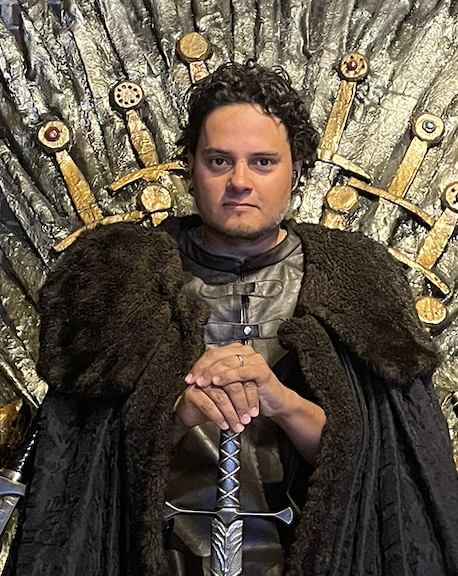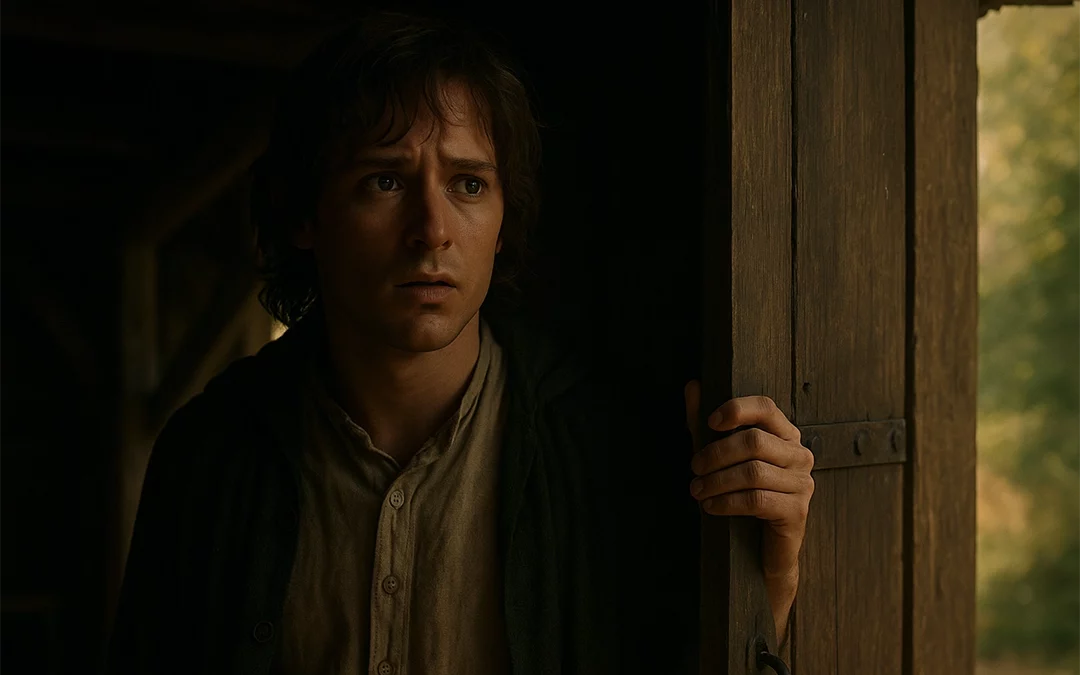When Obi-Wan Kenobi tells Luke Skywalker he must come to Alderaan and learn the ways of the Force, Luke says no.
He’s not ready. He’s got chores. He’s not interested in galactic civil wars or mystical destinies. Not yet.
And that hesitation? That’s not a bug in the story—it’s the feature. Luke’s refusal is what makes him one of the most iconic examples of the reluctant hero: the character who resists the call to adventure, who doesn’t believe they’re special, or who simply wants to be left alone. And that’s exactly why we root for them.
From ancient myths and religious texts to modern fantasy, sci-fi, and superhero epics, reluctant heroes are everywhere
So where did this trope come from? Why does it resonate so deeply? And how do authors and filmmakers keep it fresh in every generation? Let’s break it down.
The Origins of the Reluctant Hero Trope
Long before fantasy authors gave us hobbits with hairy feet and teenagers marked by prophecy, storytellers were crafting heroes who didn’t want the job.
The reluctant hero isn’t a modern invention—it’s a deep-rooted archetype that shows up in mythology, religious texts, and epic literature. Some of the oldest known stories feature people actively resisting their role in history.
Take Odysseus, for example. In The Odyssey (8th century BCE), he pretends to be mad to avoid going to war. Even after the Trojan War ends, he doesn’t seek more adventure—he just wants to go home. His entire journey is marked by a desire not to be where he is. Then there’s Moses, who, when called by God to confront Pharaoh in the Book of Exodus, protests: “Please send someone else.” He doubts himself. He doesn’t want the role. And yet—he steps up.
In medieval legend, you’ll also find King Arthur often depicted as hesitant to accept his destiny. In many retellings, he grows into leadership reluctantly, burdened by prophecy, conflict, and fate.
Fast-forward to the 20th century, and we get Joseph Campbell’s The Hero with a Thousand Faces (1949), which pulled these stories together into the famous Hero’s Journey structure. Step #3? Refusal of the Call. According to Campbell, the refusal is critical—it’s what makes the eventual acceptance meaningful. A hero who says “yes” too quickly doesn’t give us the emotional arc we crave.
So when Luke Skywalker says he’s not interested, when Bilbo slams the door on Gandalf, when Ged in Earthsea hides from his own shadow—they’re stepping into an ancient tradition. Not despite their reluctance, but because of it.
Before and After Star Wars: Key Cases
The release of Star Wars in 1977 didn’t invent the reluctant hero, but it cemented it as a foundational element of modern fantasy and sci-fi storytelling.
Luke Skywalker’s refusal to leave Tatooine—“I can’t get involved… I’ve got work to do”—is textbook. He’s ordinary, hesitant, and tethered to a mundane life until personal loss forces his hand. Once that blueprint hit the big screen, it echoed through decades of fiction.
But let’s rewind a bit. J.R.R. Tolkien’s Bilbo Baggins in The Hobbit (1937) is one of the clearest literary ancestors. Bilbo doesn’t dream of glory—he wants peace, tea, and his armchair. His reluctance isn’t just charming, it’s the core tension of the story.
Frodo, in The Lord of the Rings, inherits that legacy: he doesn’t ask to carry the Ring; he just ends up the only one willing.
And Ursula K. Le Guin’s Ged, in A Wizard of Earthsea (1968), resists responsibility after unleashing a dark force—spending much of the book running from what he must face. These are not swaggering, sword-waving types. They’re hesitant, self-doubting, and human.
Then comes Star Wars, powered by Joseph Campbell’s Hero’s Journey, with its famous third step: Refusal of the Call. It gave the reluctant hero a mainstream spotlight—and turned it into a cinematic trope. After Luke, the floodgates opened.
Post-Star Wars, the reluctant hero became a genre staple.
Think Rand al’Thor in The Wheel of Time—fighting tooth and nail against being the Dragon Reborn.
Or Vin in Brandon Sanderson’s Mistborn, who grows from a paranoid street thief into a revolutionary only after massive resistance.
In The Name of the Wind, Kvothe rejects his own myth, narrating his life with both pride and regret.
Film took the cue too: Neo in The Matrix doesn’t believe he’s The One.
Simba in The Lion King flees his kingdom.
Even John McClane in Die Hard is an accidental hero, caught in the wrong place at the wrong time.
These stories work because the refusal creates conflict, arc, and payoff. When the reluctant hero finally steps up, we feel it. We’ve watched them struggle, resist, and break—and that makes their courage matter more.
Anatomy of the Trope: How It Works, and How It Can Fail
The reluctant hero trope works because it follows a simple emotional rhythm: resistance → transformation → resolve. But just like a good spell or swordfight, it only works if it’s executed well.
The Core Structure
Most reluctant hero arcs follow these beats:
- The Call to Adventure – The hero is invited into the story: a mission, a war, a prophecy, a quest.
- The Refusal – The hero says no. They’re afraid, unprepared, or simply uninterested.
- The Catalyst – Something happens that forces their hand: a mentor dies, a home is destroyed, a loved one is threatened.
- The Decision to Act – They reluctantly accept the role, and the real journey begins.
- Growth Through Struggle – Over time, their reluctance turns into purpose—but not without setbacks.
When these steps are paced and motivated well, the audience gets to feel the transformation. It’s not just about saying yes to the quest—it’s about why the yes finally comes.
Smart writers play with the trope:
- Some heroes remain reluctant the whole way through (The First Law series).
- Others accept the role outwardly but struggle with it internally (The Poppy War).
- Some start eager, then become reluctant mid-story after discovering the true cost (A Song of Ice and Fire does this a lot).
Reluctance is never just about saying no—it’s about why the hero doesn’t want to say yes. When that reason is rich and grounded, the trope doesn’t feel tired. It feels real.
Why Writers (and Audiences) Love It
The reluctant hero trope keeps showing up for a reason: it just works. For writers, it offers built-in conflict, depth, and a clear emotional arc. For readers, it taps into something deeply human: the tension between comfort and calling.
At its heart, the reluctant hero is us. Most people don’t want to be chosen. We’re not signing up to fight dark lords, lead rebellions, or risk our lives for some ancient prophecy. We hesitate. We stall. We overthink. Watching a character go through that same resistance makes them relatable—and makes their eventual decision feel earned, not handed out like a participation ribbon.
It also creates momentum. Reluctance adds friction to the plot, forcing other characters to intervene, persuade, or manipulate. That opens space for mentors, found family, or even betrayal to enter the story. And when the hero finally steps up? That payoff hits harder. It feels deserved. We didn’t watch someone be heroic—we watched them become heroic.
Writers love it because it allows for growth, change, and drama. Audiences love it because it feels honest. In a world filled with overpowered protagonists and instant transformations, the reluctant hero reminds us that true courage often begins with doubt.
7 Must-Read / Must-See Examples
Here are seven iconic stories that show just how powerful (and flexible) the reluctant hero trope can be.
The Hobbit (Bilbo Baggins)
Bilbo wants nothing more than to be left alone with his books and tea—but ends up burglarizing a dragon.
The Lord of the Rings (Frodo Baggins)
Frodo never seeks power or glory—he just carries the burden no one else will.
Star Wars: A New Hope (Luke Skywalker)
Luke refuses the call to adventure until personal tragedy leaves him no choice.
The Matrix (Neo)
Neo spends half the story doubting he’s The One, even as everyone else insists he is.
The Lion King (Simba)
Simba runs from his royal destiny until the past—and a wise baboon—drags him back.
The Wheel of Time (Rand al’Thor)
Rand fights his fate as the Dragon Reborn for as long as possible, fearing what it will cost him.
Mistborn (Vin)
Vin doesn’t want to lead a revolution or believe in anything—but becomes the symbol of both.
The reluctant hero endures because it mirrors a truth we all recognise: stepping into something bigger than yourself is terrifying—and transformative. Whether it’s Bilbo leaving the Shire or Neo unplugging from the Matrix, these characters don’t want to be heroes. But they become them anyway. And that’s exactly why we care.
The trope is about the courage to act despite fear. When done well, it doesn’t just tell a story. It makes us ask: *What would I do, if the call came to me?*

D.P. Martinez is a contemporary fantasy author specialising in urban fantasy and magical realism. He holds an M.A. in English Literature from the University of Greenwich, where he focused on Literary London. His research explored metaphorical representations of London in urban fantasy. He has written hundreds of articles and several books across both fiction and non-fiction.

